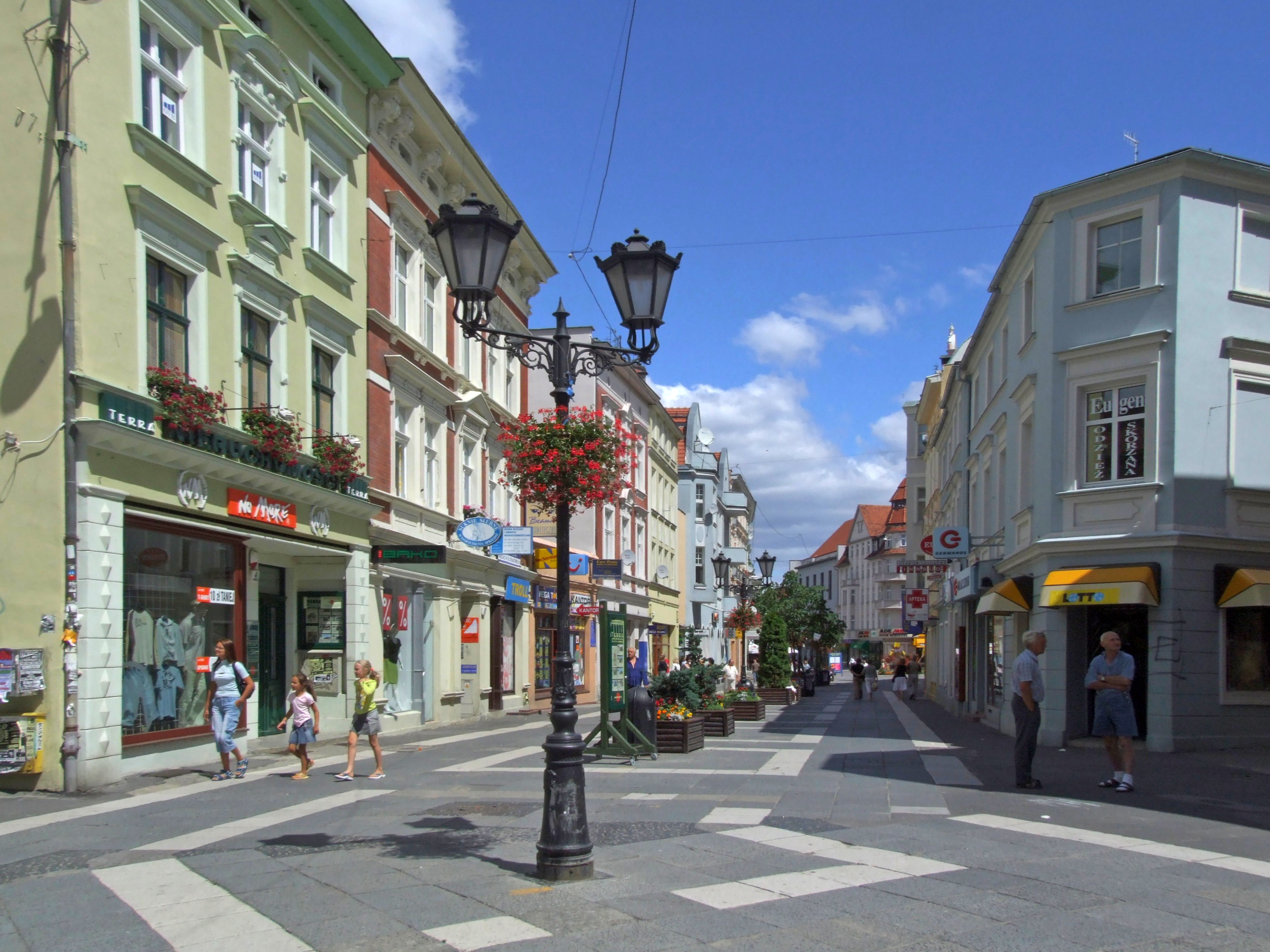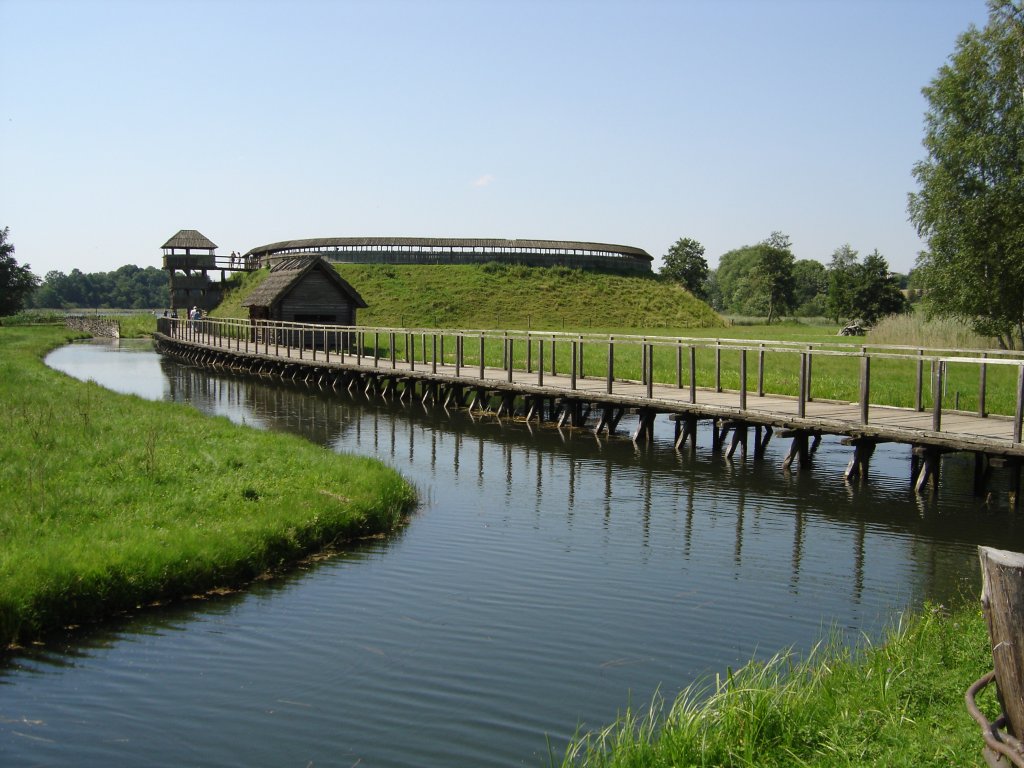|
Lubusz
Lebus ( pl, Lubusz) is a historic town in the Märkisch-Oderland District of Brandenburg, Germany. It is the administrative seat of ''Amt'' ("collective municipality") Lebus. The town, located on the west bank of the Oder river at the border with Poland, was the centre of the historical region known as Lubusz Land, which provides the name for the present-day Polish Lubusz Voivodeship. Geography Lebus is situated in the southeast of Märkisch-Oderland District, on a ridge at the left bank of the middle Oder river, which since the implementation of the Oder–Neisse line in 1945 marks the eastern German border with Poland. The town centre is located about north of Frankfurt (Oder). The municipal area comprises the localities of Lebus proper, Mallnow, Schönfließ, and Wulkow. Schönfließ Dorf station is a stop on the Eberswalde–Frankfurt (Oder) railway line served by the ''Niederbarnimer Eisenbahn'' carrier. History Settlement in the Lebus region has been traced as far back as ... [...More Info...] [...Related Items...] OR: [Wikipedia] [Google] [Baidu] |
Lubusz Land
Lubusz Land ( pl, Ziemia lubuska; german: Land Lebus) is a historical region and cultural landscape in Poland and Germany on both sides of the Oder river. Originally the settlement area of the Lechites, the swampy area was located east of Brandenburg and west of Greater Poland, south of Pomerania and north of Silesia and Lower Lusatia. Presently its eastern part lies within the Polish Lubusz Voivodeship, the western part with its historical capital Lebus (Lubusz) in the German state of Brandenburg. History Kingdom of Poland When in 928 King Henry I of Germany crossed the Elbe river to conquer the lands of the Veleti, he did not subdue the Leubuzzi people settling beyond the Spree. Their territory was either already inherited by the first Polish ruler Mieszko I (~960-992) or conquered by him in the early period of his rule. After Mieszkos' death the whole country was inherited by his son Duke, and later King, Bolesław I the Brave. After the German Northern March got l ... [...More Info...] [...Related Items...] OR: [Wikipedia] [Google] [Baidu] |
Lubusz Voivodeship
Lubusz Voivodeship, or Lubuskie Province ( pl, województwo lubuskie ), is a voivodeship (province) in western Poland. It was created on January 1, 1999, out of the former Gorzów Wielkopolski and Zielona Góra Voivodeships, pursuant to the Polish local government reforms adopted in 1998. The province's name recalls the historic Lubusz Land (''Lebus'' or ''Lubus''), although parts of the voivodeship belong to the historic regions of Silesia, Greater Poland and Lusatia. Until 1945, it mainly formed the Neumark within the Prussian Province of Brandenburg. The functions of regional capital are shared between two cities: Gorzów Wielkopolski and Zielona Góra. Gorzów serves as the seat of the centrally-appointed voivode, or governor, and Zielona Góra is the seat of the elected regional assembly ( sejmik) and the executive elected by that assembly, headed by a marshal (''marszałek''). In addition, the voivodeship includes a third city ( Nowa Sól) and a number of towns. The ... [...More Info...] [...Related Items...] OR: [Wikipedia] [Google] [Baidu] |
Lebus An Der Oder - Panoramio
Lebus ( pl, Lubusz) is a historic town in the Märkisch-Oderland District of Brandenburg, Germany. It is the administrative seat of ''Amt'' ("collective municipality") Lebus. The town, located on the west bank of the Oder river at the border with Poland, was the centre of the historical region known as Lubusz Land, which provides the name for the present-day Polish Lubusz Voivodeship. Geography Lebus is situated in the southeast of Märkisch-Oderland District, on a ridge at the left bank of the middle Oder river, which since the implementation of the Oder–Neisse line in 1945 marks the eastern German border with Poland. The town centre is located about north of Frankfurt (Oder). The municipal area comprises the localities of Lebus proper, Mallnow, Schönfließ, and Wulkow. Schönfließ Dorf station is a stop on the Eberswalde–Frankfurt (Oder) railway line served by the ''Niederbarnimer Eisenbahn'' carrier. History Settlement in the Lebus region has been traced as far ... [...More Info...] [...Related Items...] OR: [Wikipedia] [Google] [Baidu] |
Oder
The Oder ( , ; Czech language, Czech, Lower Sorbian language, Lower Sorbian and ; ) is a river in Central Europe. It is Poland's second-longest river in total length and third-longest within its borders after the Vistula and Warta. The Oder rises in the Czech Republic and flows through western Poland, later forming of the border between Poland and Germany as part of the Oder–Neisse line. The river ultimately flows into the Szczecin Lagoon north of Szczecin and then into three branches (the Dziwna, Świna and Peene) that empty into the Bay of Pomerania of the Baltic Sea. Names The Oder is known by several names in different languages, but the modern ones are very similar: English and ; Czech, Polish, and , ; (); Medieval Latin: ''Od(d)era''; Renaissance Latin: ''Viadrus'' (invented in 1534). Ptolemy knew the modern Oder as the Συήβος (''Suebos''; Latin ''Suevus''), a name apparently derived from the Suebi, a Germanic people. While he also refers to an outlet in th ... [...More Info...] [...Related Items...] OR: [Wikipedia] [Google] [Baidu] |
Poland
Poland, officially the Republic of Poland, , is a country in Central Europe. Poland is divided into Voivodeships of Poland, sixteen voivodeships and is the fifth most populous member state of the European Union (EU), with over 38 million people, and the List of European countries by area, seventh largest EU country, covering a combined area of . It extends from the Baltic Sea in the north to the Sudetes and Carpathian Mountains in the south, bordering seven countries. The territory is characterised by a varied landscape, diverse ecosystems, and Temperate climate, temperate transitional climate. The capital and List of cities and towns in Poland, largest city is Warsaw; other major cities include Kraków, Wrocław, Łódź, Poznań, and Gdańsk. Prehistory and protohistory of Poland, Humans have been present on Polish soil since the Lower Paleolithic, with continuous settlement since the end of the Last Glacial Period over 12,000 years ago. Culturally diverse throughout ... [...More Info...] [...Related Items...] OR: [Wikipedia] [Google] [Baidu] |
Margraviate Of Brandenburg
The Margraviate of Brandenburg (german: link=no, Markgrafschaft Brandenburg) was a major principality of the Holy Roman Empire from 1157 to 1806 that played a pivotal role in the history of Germany and Central Europe. Brandenburg developed out of the Northern March founded in the territory of the Slavic Wends. It derived one of its names from this inheritance, the March of Brandenburg (). Its ruling margraves were established as prestigious prince-electors in the Golden Bull of 1356, allowing them to vote in the election of the Holy Roman Emperor. The state thus became additionally known as Electoral Brandenburg or the Electorate of Brandenburg ( or ). The House of Hohenzollern came to the throne of Brandenburg in 1415. In 1417, Frederick I moved its capital from Brandenburg an der Havel to Berlin. By 1535, the electorate had an area of some and a population of 400,000.Preserved SmithThe Social Background of the Reformation.1920. Page 17. Under Hohenzollern leadership, Bran ... [...More Info...] [...Related Items...] OR: [Wikipedia] [Google] [Baidu] |
Frankfurt (Oder)
Frankfurt (Oder), also known as Frankfurt an der Oder (), is a city in the German state of Brandenburg. It has around 57,000 inhabitants, is one of the easternmost cities in Germany, the fourth-largest city in Brandenburg, and the largest German city on the river Oder. Frankfurt sits on the western bank of the river, opposite the Polish town of Słubice, which was a part of Frankfurt until 1945, and called ''Dammvorstadt'' until then. The city is located about east of Berlin, in the south of the historical region Lubusz Land. The large lake Helenesee lies within Frankfurt's city limits. The name of the city makes reference to the Franks, and means '' Ford of the Franks'', and there appears a Gallic rooster in the coat of arms of the city. The official name ''Frankfurt (Oder)'' and the older ''Frankfurt an der Oder'' are used to distinguish it from the larger city of Frankfurt am Main. The city's recorded history began in the 13th century as a West Slavic settlement. Durin ... [...More Info...] [...Related Items...] OR: [Wikipedia] [Google] [Baidu] |
Lutici
The Lutici or Liutizi (known by various spelling variants) were a federation of West Slavic Polabian tribes, who between the 10th and 12th centuries lived in what is now northeastern Germany. Four tribes made up the core of the federation: the Redarians (Redari, Redarii), Circipanians (Circipani), Kessinians (Kessini, Kycini, Chizzini) and Tollensians (Tholenzi). At least in part, the Lutici were a continuation of the Veleti. In contrast to the former and the neighboring peoples, the Lutici were not led by a Christian monarch or duke, rather power was asserted through consensus formed in central assemblies of the social elites, and the Lutici worshipped nature and several deities. The political and religious center was Radgosc (also referred to by several other names, e.g. Riedegost or Rethra). The Lutici were first recorded by written sources in the context of the uprising of 983, by which they annihilated the rule of the Holy Roman Empire in the Billung and Northern Mar ... [...More Info...] [...Related Items...] OR: [Wikipedia] [Google] [Baidu] |
Duchy Of Saxony
The Duchy of Saxony ( nds, Hartogdom Sassen, german: Herzogtum Sachsen) was originally the area settlement geography, settled by the Saxons in the late Early Middle Ages, when they were subdued by Charlemagne during the Saxon Wars from 772 and incorporated into the Carolingian Empire (Francia) by 804. Upon the 843 Treaty of Verdun, Saxony was one of the five German stem duchies of East Francia; Duke Henry the Fowler was elected List of German monarchs, German king in 919. Upon the deposition of the House of Welf, Welf duke Henry the Lion in 1180, the ducal title fell to the House of Ascania, while numerous territories split from Saxony, such as the Principality of Anhalt in 1218 and the Welf Duchy of Brunswick-Lüneburg in 1235. In 1296 the remaining lands were divided between the Ascanian dukes of Saxe-Lauenburg and Duchy of Saxe-Wittenberg, Saxe-Wittenberg, the latter obtaining the title of Electorate of Saxony, Electors of Saxony by the Golden Bull of 1356. Geography The Sax ... [...More Info...] [...Related Items...] OR: [Wikipedia] [Google] [Baidu] |
Polabian Slavs
Polabian Slavs ( dsb, Połobske słowjany, pl, Słowianie połabscy, cz, Polabští slované) is a collective term applied to a number of Lechitic ( West Slavic) tribes who lived scattered along the Elbe river in what is today eastern Germany. The approximate territory stretched from the Baltic Sea in the north, the Saale and the '' Limes Saxoniae''Christiansen, 18 in the west, the Ore Mountains and the Western Sudetes in the south, and Poland in the east. They have also been known as Elbe Slavs (german: Elbslawen) or Wends. Their name derives from the Slavic ''po'', meaning "by/next to/along", and the Slavic name for the ''Elbe'' (''Labe'' in Czech and ''Łaba'' in Polish). The Polabian Slavs started settling in the territory of modern Germany in the 6th century. They were largely conquered by Saxons and Danes since the 9th century and were subsequently included and gradually assimilated within the Holy Roman Empire. The tribes were gradually Germanized and assimilate ... [...More Info...] [...Related Items...] OR: [Wikipedia] [Google] [Baidu] |
Polans (western)
The Western Polans (also known as Polanes, Polanians; , derived from Old Slavic ''pole'', "field" or "plain", from Proto-Indo-European ''*pleh₂-'' "flatland") were a West Slavic and Lechitic tribe, inhabiting the Warta River basin of the contemporary Greater Poland region starting in the 6th century. They were one of the main tribes in Central Europe and were closely related to the Vistulans, Masovians, Czechs and Slovaks. History In the 9th century, the Polans united several West Slavic (Lechitic) groups to the north of Great Moravia. The union led by the Piast dynasty developed into the Duchy of Poland, whose name derives from that of the Polans. The earliest Polan rulers mentioned by name are the legendary figures of Piast the Wheelwright and Popiel (8th–9th centuries). The first historical ruler was Mieszko I (960–992), who enlarged the territory later named Poland by incorporating Masovia and conquering Silesia and the Vistulan lands of Lesser Poland. The D ... [...More Info...] [...Related Items...] OR: [Wikipedia] [Google] [Baidu] |
Ortsteil
A village is a clustered human settlement or community, larger than a hamlet but smaller than a town (although the word is often used to describe both hamlets and smaller towns), with a population typically ranging from a few hundred to a few thousand. Though villages are often located in rural areas, the term urban village is also applied to certain urban neighborhoods. Villages are normally permanent, with fixed dwellings; however, transient villages can occur. Further, the dwellings of a village are fairly close to one another, not scattered broadly over the landscape, as a dispersed settlement. In the past, villages were a usual form of community for societies that practice subsistence agriculture, and also for some non-agricultural societies. In Great Britain, a hamlet earned the right to be called a village when it built a church. [...More Info...] [...Related Items...] OR: [Wikipedia] [Google] [Baidu] |









